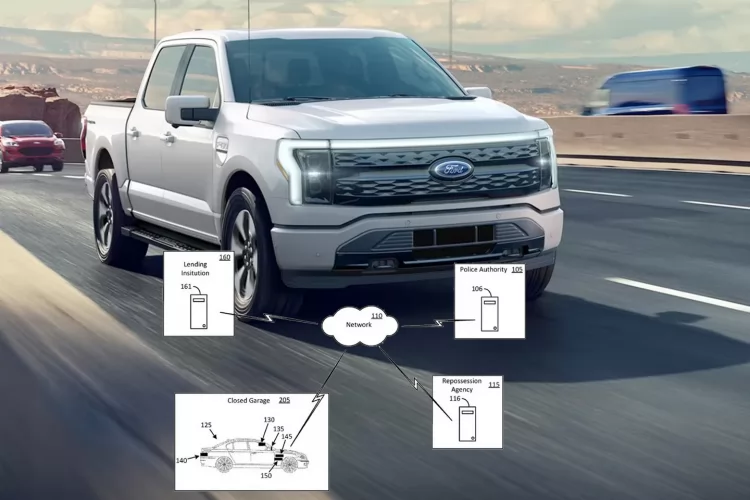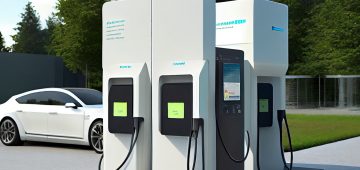Design in electric vehicles is not just about aesthetics but also encompasses sound design, which is increasingly becoming a key consideration. As you embrace the transition to quieter electric cars, you may overlook the potential dangers that come with reduced auditory feedback on the road. Additionally, the positive aspects of intentional sound design can enhance your driving experience, providing a sense of safety and character to these modern machines. Understanding this evolution in sound design is necessary for navigating the future of mobility.
Key Takeaways:
- Safety Concerns: The transition to electric vehicles (EVs) has generated an emphasis on incorporating sound design to enhance pedestrian safety, as EVs are quieter than traditional vehicles.
- Brand Identity: Companies are leveraging sound as a means to establish a unique brand identity and improve the overall customer experience, making the auditory aspect of EVs just as important as their visual design.
- Regulatory Standards: Governments are introducing regulatory standards that mandate minimum sound levels for EVs, pushing manufacturers to innovate in sound design to meet compliance while appealing to consumers.
Understanding Sound Design in Electric Vehicles
While the shift toward electric vehicles (EVs) represents a significant advancement in automotive technology, it also brings forth a unique challenge: sound design. When operating, traditional internal combustion engine vehicles produce distinct sounds that you likely associate with driving. In contrast, electric vehicles are noticeably quieter, which raises important considerations for both safety and consumer experience. As the demand for Electric Cars and Noise Reduction in Urban Environments increases, manufacturers must rethink how sound can enhance and clarify the driving experience.
The Role of Sound in Vehicle Safety
Safety is a primary concern for both drivers and pedestrians, especially in urban settings where vehicle speeds are lower and foot traffic is higher. The lack of engine noise in electric vehicles can lead to an increased risk of accidents, as pedestrians may not hear an EV approaching. This is why lawmakers in various regions have mandated that EVs emit a certain level of sound when traveling at low speeds, ensuring that you remain aware of your surroundings, and using sound design effectively can help prevent dangerous situations.
Additionally, sound serves as an important feedback mechanism for you as a driver. The auditory cues provide indicators of acceleration, braking, and overall vehicle performance. As a driver, you rely on these sounds to gauge how your vehicle is responding in different driving scenarios. Effective sound design not only informs you about your vehicle’s status but also creates a comfortable and reassuring driving experience.
Consumer Preferences and Expectations
Safety is not the only aspect of sound design that influences consumer behavior; your preferences and expectations also play a significant role. As electric vehicles become more prevalent, you may find yourself drawn to models that offer innovative soundscapes that enhance your driving experience. Many consumers appreciate a vehicle that not only meets their functional needs but also engages their auditory senses, reinforcing the idea that sound design can improve the overall emotional appeal of the vehicle.
Consumer interest in unique sound profiles is becoming more pronounced as manufacturers aim to differentiate their electric vehicles in a crowded market. You may value not only the functionality but also the character of the sounds produced by your vehicle. From futuristic designs that evoke a sense of speed to calming sounds that promote tranquility, you are likely to favor vehicles that resonate with your lifestyle and driving preferences.
Consumer expectations have shifted, as many individuals now see electric vehicles not just as a mode of transportation, but as a reflection of personal identity. Therefore, the sounds that accompany electric vehicles can heavily influence your decisions and experiences. By recognizing and adapting to these preferences, manufacturers can create a product that not only meets your safety needs but also aligns with your values and lifestyle choices.
The Science of Sound
Assuming you are considering the acoustic characteristics of electric vehicles (EVs), it is important to understand how their design inherently differs from traditional internal combustion engine vehicles. An EV’s quiet operation stems from its propulsion being powered by an electric motor, which generates significantly less noise than a gasoline or diesel engine. Notably, this quietness can pose safety risks in urban environments where pedestrians and cyclists may not be able to hear an approaching vehicle. Therefore, many manufacturers are looking at acoustics not just as an aesthetic consideration but as a fundamental aspect of safety and functionality.
Acoustic Properties of Electric Vehicles
An understanding of the acoustic properties that define electric vehicles can greatly enhance your perception of their engineering sophistication. For instance, since EVs produce lower levels of inherent noise, other aspects, such as the sound of the tires on the road, become more pronounced. Designers are now tasked with creating an overall sound profile that compensates for this quiet operation while striving to enhance the driving experience. This leads to a diverse sound palette that designers can manipulate to evoke different feelings, ensuring the vehicle does not feel eerily silent or confusing to users on the road.
Impact of Sound on Driving Experience
Beside addressing safety concerns, sound plays a vital role in enhancing your driving experience. As you drive an electric vehicle, the sounds you encounter contribute to your sense of connection with the car and the environment. The audio feedback you receive while accelerating, decelerating, or cruising can inform you of your speed and enhance your confidence in the vehicle. Innovative manufacturers are crafting custom soundscapes that add a layer of engagement and excitement, making the driving experience not just functional but also enjoyable.
Even more critically, the right sound can influence your mental state while driving. A thoughtfully designed sound environment can evoke feelings of calmness, focus, or even thrill, depending on the driving context. This transformation of sound into a tool for enhancing your experience is paving the way for the future of mobility, allowing you to experience a new dimension of driving unlike anything you have known before.
Innovations in Sound Design
Once again, the automotive industry is witnessing a remarkable transformation, and this time, it revolves around sound design in electric vehicles. As EVs continue to gain popularity, manufacturers are recognizing the importance of creating a distinct auditory experience that enhances not only the driving experience but also your emotional connection to the vehicle. The move towards innovative sound design involves a range of approaches, from crafting unique sounds for different vehicle models to exploring advanced technologies like artificial intelligence for sound creation.
Tailoring Sounds for Different Models
Sounds play an integral role in defining a vehicle’s identity, and automakers are eager to provide customized audio experiences tailored to different models. For instance, a sporty electric car may have an energetic, high-frequency sound that evokes a sense of speed and performance, while a family-oriented EV might opt for softer, soothing tones that reflect comfort and tranquility. This thoughtful approach not only allows you to choose a vehicle that resonates with your personal style, but also fosters a deeper connection to the car, as the sound envelops you in a unique atmosphere every time you drive.
The Use of Artificial Intelligence in Sound Creation
By embracing cutting-edge technologies, the use of artificial intelligence (AI) in sound creation is revolutionizing the way sounds are designed for electric vehicles. AI algorithms can analyze a vast database of audio characteristics and preferences, enabling manufacturers to generate sounds that align with your expectations. This personalized approach means that the vehicle’s auditory experience can be optimized not just for performance but also for emotional impact, making your driving routine more enjoyable and aligned with your tastes.
Considering the potential of AI in sound design, the future looks promising. With machine learning capabilities, AI can continuously improve sound quality and effectiveness based on real-time driver feedback. While this introduces exciting possibilities, it also raises concerns about the preservation of authentic automotive sound. You may ponder whether machines can truly capture the essence of what a vehicle should sound like. The balance between innovation and tradition is delicate, yet it presents a robust pathway for creating an auditory landscape that reflects both modern technology and rich automotive heritage.
Future Trends and Challenges
To fully appreciate the impact of sound design in electric vehicles (EVs), you must consider the evolving landscape that encompasses regulatory moves, societal expectations, and advancing technologies. As the industry shifts gears towards greater electrification, sound design is becoming not just a matter of aesthetics but also a safety and compliance issue. This section explores vital trends that may shape the future of sound design in EVs and the challenges that are likely to arise in navigating these waters.
Regulatory Considerations for Vehicle Sound
Considerations around regulations are becoming increasingly important for manufacturers and consumers alike. As EVs become more prevalent, many countries have implemented laws requiring vehicles to generate artificial sounds at low speeds to help alert pedestrians and cyclists to their presence. These regulations are aimed at enhancing public safety, especially in urban areas, where the quiet operation of electric vehicles poses a risk to those who rely on auditory cues to navigate their environment.
As you explore these regulatory frameworks, it’s imperative to stay informed about the potential for future legislation that may mandate specific sound profiles for EVs. You’ll face challenges in meeting these requirements while still providing a satisfying auditory experience for passengers and drivers alike. Balancing performance with compliance could define the next wave of innovation in the EV space.
Balancing Noise and Silence in Urban Environments
Regulatory demands have led to a deeper examination of how sound shapes our experiences in urban environments. While artificial sounds can enhance safety, you must also consider the challenges of noise pollution that many cities already grapple with. The juxtaposition of silent electric vehicles and the surrounding urban noise creates a distinct atmosphere where you may either appreciate the tranquility or find it disconcerting.
Indeed, as cities continue to evolve, the goal will be to find a harmonious balance that addresses both public safety and quality of life. The incorporation of sound profiles in electric vehicles should not only prioritize alertness but also contribute positively to the urban soundscape. Future designs could explore options that offer nuanced sounds, adapted to specific environments or times of day, ensuring that your experience in both driving and living spaces is enhanced rather than disrupted. Achieving this equilibrium presents not just a challenge for manufacturers but an opportunity for innovators to rethink what vehicle sound can mean in a modern, urban context.
Conclusion
Presently, as you navigate the evolving landscape of electric vehicles (EVs), it’s imperative to recognize the significant role sound design plays in enhancing your driving experience. Unlike traditional vehicles that produce an array of familiar sounds, EVs are notably quieter, creating a unique challenge and opportunity for manufacturers and designers alike. By investing in thoughtful sound design, manufacturers aim to create auditory features that not only comply with safety regulations but also enrich your connection to the vehicle. This focus on sound design invites you to engage with your EV on a sensory level, making your driving experience both enjoyable and memorable.
As you consider the future of transportation, the quiet revolution transforming the automobile industry is one where sound becomes an vital element of vehicle identity and user experience. The thoughtful integration of sound design signals a shift towards a more holistic approach in which your vehicle’s auditory environment complements its advanced technology and sleek aesthetics. By embracing this evolution, you not only contribute to a safer driving experience for pedestrians and cyclists but also unlock the potential for an enriching driving experience that resonates with your personal style and preferences.
FAQ
Q: What is the Quiet Revolution in relation to electric vehicles?
A: The Quiet Revolution refers to the significant shift in the automotive industry where electric vehicles (EVs) are designed to emit less noise compared to traditional combustion engine vehicles. As these vehicles gain popularity, there is a growing emphasis on sound design to ensure an optimal driving experience. This includes balancing the need for pedestrian safety with the desire for an immersive and enjoyable cabin experience for the driver and passengers. The revolution addresses how sound impacts user perception and emotional responses, leading manufacturers to explore innovative soundscapes that enhance the overall driving experience.
Q: Why is sound design important in electric vehicles?
A: Sound design in electric vehicles plays a vital role for several reasons. Firstly, EVs are naturally quieter than their gasoline counterparts, leading to potential safety concerns as pedestrians may not hear them approaching. Manufacturers are thus integrating external sounds to alert pedestrians while also creating a signature sound profile for the vehicle. Secondly, sound design contributes to the overall driving experience, offering auditory feedback that can enhance the feelings of power and performance. Lastly, unique sounds can help differentiate brands in a competitive market, providing a distinctive identity that resonates with consumers.
Q: How do automakers approach the sound design for electric vehicles?
A: Automakers approach sound design for electric vehicles by collaborating with acousticians, sound designers, and engineers to develop a sound identity that aligns with their brand values and target audience. The process includes extensive research and testing to gather feedback from drivers about desired sounds during acceleration, deceleration, and at idle. Manufacturers may use synthesizers and speakers to create a tailored sound profile, which can also vary depending on driving modes. The goal is to create auditory elements that not only ensure safety but also enhance the driving experience while maintaining an elegant and futuristic aspect that aligns with the electric vehicle’s ethos.



